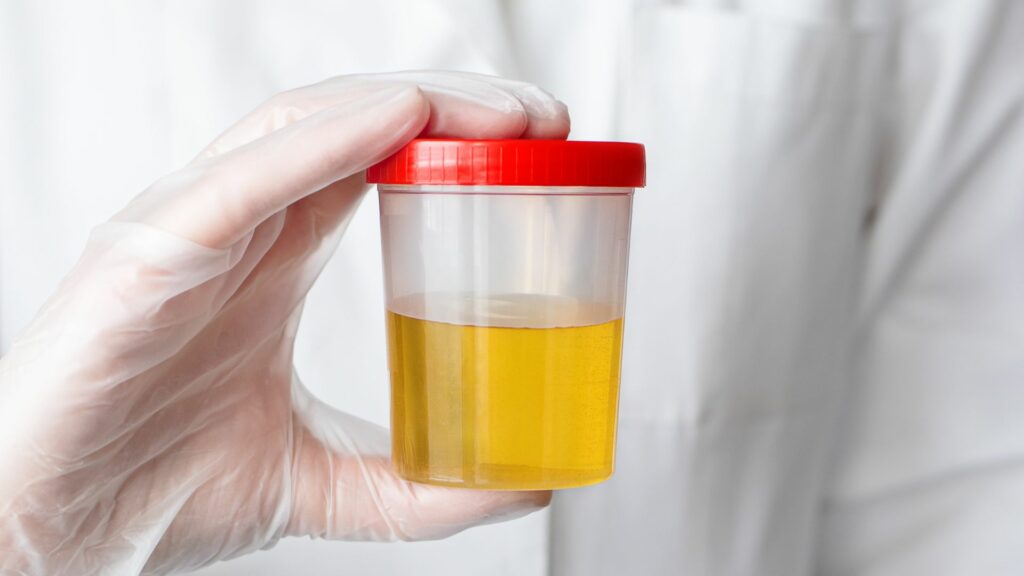What The Color of Your Pee Says About You
Have you ever wondered what the color of your pee says about your health? It turns out that the color of your urine can tell you a lot about your overall health. Think of your pee as a window into your body’s wellness.
Urine gets its color from a pigment called urochrome or urobilin. Lighter-colored urine indicates that it is more diluted, while darker urine usually means it is more concentrated.
So, what color is healthy urine? Generally speaking, if your urine is a pale yellow or clear color, then you are well-hydrated and healthy. However, if it is a darker yellow or orange hue, then this could be an indication that you are becoming dehydrated. Additionally, red or pink urine may indicate food that you ate or a serious health problem and should be checked out by a doctor.
It’s important to note that certain vitamins and medications can also affect the color of your pee. For example, taking too many B vitamins can cause your urine to appear bright yellow in color. Similarly, some antibiotics and laxatives may also cause changes in the hue of your pee.
Let’s go more in-depth about what your urine says about your health.

Transparent (No color)
If your urine is completely clear, it may indicate you are over-hydrated. This means that you are drinking more water than your body needs. It’s important to stay hydrated, but try to drink only when thirsty and not in excess.
But what about if your pee is clear and you don’t drink water? This could be a sign of an underlying health issue such as diabetes, kidney disease, or liver disease. To get to the bottom of the issue, it’s best to speak with a doctor if you are concerned.
Light Yellow
Light yellow urine is a sign of good hydration and indicates that you are giving your body the necessary fluids. This is the most optimal color for healthy individuals.
Dark Yellow
Darker yellow urine can mean you are dehydrated or not drinking enough water throughout the day. Make sure to drink plenty of fluids if this is the case!
Orange
Orange-colored urine could be an indication of dehydration or certain medications such as rifampin, phenazopyridine hydrochloride (Pyridium), and vitamins A or B12. Aside from medications, orange pee can also signify hepatitis or jaundice. Therefore, rehydrate if you’re thirsty and speak with your doctor if the color persists.
Pink or red
Red or pink urine is likely no cause for alarm. You probably just ate beets, rhubarb, or blackberries or took certain medicines that discolored your pee. But if you don’t eat any of these, see your doctor. That’s because red or pink color might signal blood in your urine, urinary tract infection, kidney or bladder stones, or even cancers of the bladder or kidney.
Dark brown urine
Dark brown urine can have many causes. Severe dehydration is one of the most common reasons for dark brown urine. Other possible:
- medical causes include the presence of blood, kidney or liver disease, porphyrias, or a urinary tract infection.
- certain foods you eat, such as fava beans, asparagus, or aloe.
- certain medications you take, such as the laxatives containing cascara or senna, iron supplements, certain antibiotics, and antimalarial drugs.
If you are concerned, reach out to your doctor to get to the root of the issue.
Cloudy
Cloudy urine can be caused by several things, like dehydration, high-protein diets, urinary tract infections, diabetes, and even kidney stones.
Blue or green
No one wants their pee to be blue or green! This could be a sign that you are taking certain dyes or medications, such as amitriptyline, indomethacin, or indigo carmine dye. If you keep seeing this color, go see your doctor.
It’s important to keep an eye on the color of your pee since it can tell you so much about your health! Make sure to stay hydrated and talk with your doctor if any changes occur to get proper treatment and care for any underlying issues.
Also read: Why You Shouldn’t Hold Your Pee






